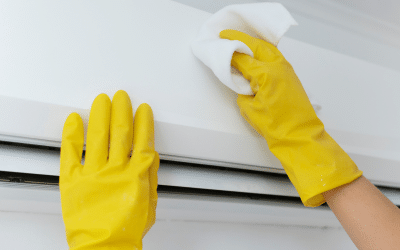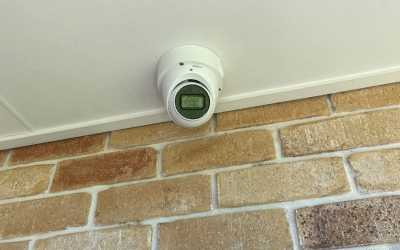Smart homes, once a futuristic concept, have rapidly become a practical reality, enhancing daily living with a blend of innovation and convenience. At the heart of a smart home lies the integration of various devices and systems—everything from lighting and heating to security and entertainment—all controlled through smart home technology. This intelligent orchestration not only boosts home efficiency but significantly elevates comfort and safety.
The evolution of home automation has been propelled by advances in the Internet of Things (IoT) technologies, making it possible for everyday objects to communicate with each other and with us. By seamlessly connecting devices like thermostats, door locks, and appliances, a smart home setup can learn your preferences and automate tasks to fit your lifestyle. This connectivity leads to energy-efficient homes where every watt of power and every drop of water is used judiciously.
For many, the term ‘smart home’ conjures images of complex systems and tech-heavy installations. However, the reality is that modern smart home solutions are designed with user accessibility in mind. Whether you are tech-savvy or new to the concept, setting up a smart home has become more straightforward, with DIY smart home products readily available and easy to integrate.
The benefits of adopting smart home technology are manifold. From the convenience of controlling your home environment from your smartphone to the peace of mind that comes with advanced smart home security systems, the advantages extend beyond mere comfort. They also include substantial savings on utility bills and a reduced environmental footprint, making smart homes not only a smart choice for today but a sustainable one for the future.
In this blog post, we’ll explore how these technologies come together to create homes that are not just places to live but environments that respond and adapt to your needs. We’ll guide you through the essential components, setup processes, and the strategic selection of smart devices, ensuring you understand how to leverage smart home technology to its full potential, enhancing both your home’s efficiency and your quality of life.
What is a Smart Home?
A smart home embodies the integration of technology into residential spaces to create environments that are responsive, interconnected, and remotely controllable. The core idea revolves around the Internet of Things (IoT), a network of devices that communicate and operate together to manage home functions without manual intervention. This ecosystem includes everything from basic appliances to sophisticated security systems, all designed to enhance living through automation and efficiency.
Smart homes leverage IoT devices to perform a wide array of functions. These can range from adjusting lighting and temperature based on your preferences and schedule, to sending you real-time alerts about what’s happening in your home while you’re away. The technology enables homeowners to customise their living environment extensively, leading to not only enhanced comfort and convenience but also improved energy management and security.
Core Components of a Smart Home
The architecture of a smart home is built around several key components, each integral to its overall functionality:
- Smart Hubs: Serving as the central point of control, smart hubs connect diverse devices across different communication protocols. They process the data and allow these devices to work together harmoniously. Examples include Samsung SmartThings, Google Nest Hub, and Amazon Echo.
- 2. Apps: Mobile or web applications are essential for remote interaction with your smart home. These apps not only let you control the settings and monitor your home in real time but also receive notifications and updates directly on your phone or tablet, no matter where you are in the world.
- 3. Interconnected Devices: These are the actual IoT devices that execute the tasks. They include smart thermostats like Nest or Ecobee, smart lights such as Philips Hue, security cameras, smart locks, and voice assistants like Amazon Alexa or Google Assistant. Each device plays a specific role but is designed to work in concert with others to streamline home management.
- Network Connectivity: A robust and secure Wi-Fi network is crucial as it connects all the smart devices to the internet and each other. This connectivity is what allows for the seamless communication and execution of tasks across your smart home setup.
- Sensors: Often overlooked but vital, sensors in smart homes detect changes in the environment—such as motion, temperature, or light—and trigger devices to act accordingly. For example, motion sensors can turn on lights when someone enters a room or send an alert when unexpected movement is detected during certain hours.
Together, these components create a sophisticated ecosystem capable of automating daily tasks and responding to homeowner needs with little to no input, defining what it means to live in a smart home.
Benefits of a Smart Home
Smart homes represent a significant advancement in residential living, delivering a host of benefits that enhance convenience, security, and efficiency while potentially reducing costs. The integration of smart technology into home management brings a new level of control and automation that simplifies daily routines, secures the home environment, and customises entertainment options, all while promoting energy conservation.
Enhanced Convenience
One of the most apparent advantages of smart homes is the sheer convenience they offer. Smart devices automate routine tasks, from adjusting your heating and cooling systems to brewing your morning coffee before you even step out of bed. Imagine waking up to the perfect room temperature, your favourite music playing, and the blinds gradually lifting to let in the morning light—all orchestrated without lifting a finger. Moreover, remote control capabilities allow you to manage your home from anywhere in the world. Forgot to lock the door or turn off the oven? A quick tap on your smartphone app can secure and safeguard your home instantly.
Improved Energy Efficiency
Smart homes excel in optimising energy use, which not only helps the environment but also reduces household costs. Smart thermostats like Nest or Honeywell learn your schedule and temperature preferences to heat or cool your home more efficiently. They adjust themselves based on real-time data, such as the ambient temperature and the number of people in the room, ensuring that energy isn’t wasted. Similarly, smart lighting systems can detect when rooms are unoccupied and turn off lights automatically, or adjust brightness according to the time of day, which significantly cuts down on unnecessary power consumption.
Advanced Security Features
The security of smart homes is enhanced by a range of sophisticated technologies designed to protect your property and provide peace of mind. Smart locks can be controlled remotely, offer customised access codes for visitors, and lock automatically when you forget. Surveillance systems provide real-time video feeds directly to your smartphone, alerting you to unusual activity with motion-sensing notifications. Additionally, integrated security systems can connect with smoke alarms, water leak detectors, and other safety devices to ensure rapid response to any potential threat or emergency, reinforcing the safety of your living environment.
Entertainment and Lifestyle Enhancements
Smart homes also revolutionise entertainment and lifestyle experiences. Smart TVs and speakers can be voice-controlled to play your favourite shows and music without the need to search through menus or use remote controls. These devices can also be connected to other smart home elements—for instance, creating ambiance settings that adjust lighting and temperature to match the mood of the movie you’re watching. This seamless integration extends beyond entertainment to other aspects of lifestyle, such as fitness, where equipment can sync with your health monitoring apps, providing a holistic approach to your health and leisure activities.
In essence, the benefits of smart homes go beyond mere gadgetry, offering a profound enhancement to the quality of life, efficiency, and security of their inhabitants.
Setting Up a Smart Home
Integrating smart home technology into your residence can transform how you interact with your living space, making it more responsive, efficient, and secure. Whether you are taking your first steps towards a smart home or looking to upgrade your existing setup, the process involves careful planning and consideration. Here’s a straightforward guide to get you started on your smart home journey.
Choosing the Right Devices
The first step in creating a smart home is to select the appropriate devices that meet your specific needs. Consider the following when choosing your smart home products:
- Identify Your Needs: Determine what aspects of your home life you want to enhance. Are you looking to improve home security, energy efficiency, convenience, or entertainment? Identifying your priorities will guide your device selection.
- Check Compatibility: Ensure that the devices you choose can communicate with each other. Look for products that are compatible with the same smart home ecosystems, such as Google Home, Apple HomeKit, or Amazon Alexa. This compatibility is crucial for seamless integration and operation.
- Ease of Use: Opt for devices that offer easy setup and user-friendly interfaces. Consider whether you prefer voice-controlled, app-based, or manual controls for your devices.
- Future Scalability: Select devices that allow you to add more components as your needs evolve. Starting with a scalable system will make it easier to expand your smart home capabilities in the future.
- Read Reviews and Recommendations: Research and read reviews to understand the reliability and performance of the products. Recommendations from other smart home users can provide valuable insights into the practical usage of the devices.
Establishing a Central Hub
A central hub, or a smart home controller, is crucial in managing all your connected devices efficiently. Here’s why a central hub is important:
- Unified Control: A central hub allows you to manage all your devices from one place, be it an app on your smartphone or a physical control panel. This simplifies the process of adjusting settings across different devices.
- Routine Automation: With a central hub, you can create routines and automations that help your devices work together based on your daily activities or specific conditions in your home.
- Enhanced Compatibility: Some hubs offer broader device compatibility, bridging communication gaps between devices that use different protocols.
Choosing the right hub depends on the devices you plan to integrate. Popular options include the Google Nest Hub, Amazon Echo, and Apple HomePod, each supporting various protocols and devices.
Connecting Devices
Properly connecting your devices ensures they communicate effectively and work as intended. Here are some tips to ensure a successful connection:
- Follow Manufacturer Instructions: Start each device setup by carefully following the manufacturer’s instructions. This may involve downloading an app, connecting the device to your Wi-Fi network, and pairing it with your central hub.
- Secure Your Network: Ensure that your home Wi-Fi network is secure to protect your devices from unauthorised access. Use strong, unique passwords for your network and smart devices.
- Test Connections: After setting up your devices, test them to ensure they operate correctly and communicate with the central hub. Check for any firmware updates that might be available to enhance functionality and security.
- Placement Matters: Position devices like routers and hubs centrally within your home to ensure a strong and consistent signal to all connected devices. Consider the range of wireless signals and potential interference from walls and other electronics.
By following these steps, you can start integrating smart home technology effectively, creating a more connected and responsive living environment tailored to your needs.
Common Smart Home Devices to Start With
When beginning your journey into the world of smart home technology, it can be beneficial to start with a few key devices that offer significant benefits and are relatively simple to install. These initial devices not only provide a solid foundation for a comprehensive smart home system but also allow you to experience the immediate advantages of home automation.
Smart Speakers and Hubs
Smart speakers and hubs are often the cornerstone of a smart home setup due to their central role in managing and controlling other devices. These devices, such as the Amazon Echo, Google Nest Hub, and Apple HomePod, offer a variety of functionalities:
- Voice Control: Smart speakers enable voice-activated control over your home, allowing you to perform tasks like playing music, setting timers, or controlling other smart devices without lifting a finger.
- Centralised Management: These devices act as a hub that connects various smart home devices, enabling them to work in harmony. For example, you can create routines that adjust your heating, lighting, and security settings with a single voice command.
- Accessibility: With their intuitive design, smart speakers are accessible to users of all tech levels and can be especially helpful for those who are not as comfortable with smartphone-based controls.
- Entertainment and Information: Beyond controlling your smart home, these devices can stream music, provide news updates, check the weather, and even help with cooking recipes, making them a versatile addition to any home.
Smart Lighting and Plugs
Smart lighting systems and smart plugs are excellent starting points for those new to smart home technology, offering both convenience and energy efficiency with minimal setup:
- Smart Lighting: Smart bulbs, such as those from Philips Hue or LIFX, can be controlled via an app or voice commands, allowing you to turn them on and off, dim them, and even change their colours without needing to touch a switch. They can be programmed to adjust based on the time of day or your personal schedule, improving both the ambiance and energy usage of your home.
- Smart Plugs: These devices plug into traditional wall sockets and turn ordinary appliances into smart ones. With a smart plug, you can control non-smart devices like lamps, fans, or coffee makers from your smartphone or through voice commands. They are also invaluable for monitoring the energy usage of plugged-in devices, helping to reduce power consumption by turning off devices that aren’t in use.
Starting with these devices allows you to gradually familiarise yourself with the functionalities and benefits of a smart home, setting the stage for more advanced integrations as you become more comfortable with the technology. They offer immediate enhancements to your daily life, from increased convenience and improved energy efficiency to enhanced security and entertainment options.
Smart Home Integration Challenges
While the benefits of smart home technology are extensive, setting up such a system can sometimes be fraught with challenges. These hurdles can range from technical issues to compatibility conflicts among devices. Understanding these challenges and knowing how to address them is crucial for creating a seamless and functional smart home environment.
Compatibility Issues
One of the most common obstacles in smart home integration is ensuring that all devices are compatible and can communicate effectively with each other. Here’s how to navigate these compatibility issues:
- Research Before Buying: Before purchasing any smart home device, check if it is compatible with your existing system or other devices you plan to use. Look for devices that support standard communication protocols such as Zigbee, Z-Wave, or are compatible with major ecosystems like Google Assistant, Amazon Alexa, or Apple HomeKit.
- Use a Universal Hub: Investing in a universal smart home hub can solve many compatibility issues by serving as a mediator between devices that use different technologies or protocols.
- Software Updates: Keep all devices updated with the latest firmware and software versions. Updates often include improvements in compatibility and new features that enhance integration.
Understanding and addressing these compatibility issues upfront can significantly ease the process of setting up and expanding your smart home system, ensuring all parts of your smart ecosystem can work together harmoniously.
Network Requirements
A robust and reliable home Wi-Fi network is vital for the smooth operation of smart home devices. Here’s why your network’s strength and stability are crucial, and how to ensure it meets the demands of your smart home:
- Bandwidth and Speed: Smart home devices constantly send and receive data. Ensure your internet connection has enough bandwidth to handle multiple devices operating simultaneously without lag or interruptions.
- Wi-Fi Coverage: Ensure that your Wi-Fi network provides strong coverage throughout your home. Devices located far from the router or in ‘dead spots’ can suffer from connectivity issues. Consider using Wi-Fi extenders or mesh network systems to increase coverage across larger or multi-story homes.
- Network Security: Smart homes can be vulnerable to cyber threats. Protect your network by using strong, unique passwords, enabling network encryption, and regularly updating your router’s firmware. Consider setting up a separate Wi-Fi network exclusively for your smart home devices to isolate them from your primary network where you handle sensitive information like online banking.
By addressing these network requirements, you can ensure that your smart home operates efficiently and securely, with all devices maintaining stable connections for optimal functionality. Addressing these foundational aspects not only enhances the performance of your smart home but also safeguards it against potential disruptions and security risks.
The Future of Smart Homes
As technology continues to evolve at a rapid pace, the future of smart homes promises even greater advancements and innovations. These developments are poised to make smart homes more intuitive, efficient, and even more integrated into our daily lives. Let’s explore some of the exciting trends and long-term implications of smart home technology.
Innovations on the Horizon
The next wave of smart home technology is likely to be driven by significant advancements in artificial intelligence (AI) and machine learning, enabling homes to become even smarter and more responsive. Here are some potential future developments:
- Predictive Personalisation: Future smart homes could use AI to learn from your habits and routines to anticipate your needs without input. For example, your home might prepare your breakfast coffee as soon as your morning alarm goes off or optimise the heating schedule based on your usual activities.
- Integrated Smart Home Robots: As robotics technology advances, we can expect to see more robots integrated into the smart home environment. These might include robots for household chores, security, or even elderly care, all controlled via the smart home system.
- Enhanced Sustainable Living: Innovations in smart technology will likely focus on sustainability, with systems designed to further reduce energy use and automate recycling processes. For example, smart windows could adjust tint based on the sunlight to optimise natural heating and lighting, significantly reducing energy costs.
- Health Monitoring: Future smart homes might include more advanced health monitoring systems, using sensors to track health metrics such as air quality, or even residents’ vital signs, providing alerts and data to healthcare providers when necessary.
- Seamless Integration with Autonomous Vehicles: As autonomous vehicles become more common, smart homes will integrate more closely with these systems, possibly allowing your car to signal your home to open the garage door and turn on the lights as you near home.
Long-term Benefits and Considerations
The long-term impact of smart homes extends far beyond convenience, promising significant changes to lifestyle, energy consumption, and home management:
- Lifestyle Enhancements: As homes become more responsive and tailored to individual needs, residents will enjoy higher levels of comfort and personalisation. This could lead to better overall well-being and more time to spend on enjoyable activities rather than household chores.
- Energy Consumption: Smart homes are at the forefront of reducing household energy usage. Long-term, this trend will not only lead to cost savings for homeowners but also contribute to broader environmental goals, such as reduced carbon emissions.
- Home Management: With the integration of AI and more sophisticated systems, the management of homes will become more automated and less intrusive. Homeowners will be able to monitor, control, and secure their homes with minimal effort, potentially leading to a new standard in residential living.
- Privacy and Security: While the benefits are substantial, the rise of smart homes also raises concerns about privacy and data security. Ensuring that these systems are secure against hacks and unauthorised access, and that personal data is protected, will be crucial.
As we look to the future, it’s clear that smart home technology holds a promise of transforming our domestic lives in profound ways. Embracing these advancements will require thoughtful consideration of both the potentials and the pitfalls, aiming for a future where technology truly enhances our homes and lives.
Key Takeaways
Integrating smart home technology into our living spaces brings numerous benefits that enhance efficiency, comfort, and security. Here are the most important points to consider:
- Ease of Use and Convenience: Smart homes simplify daily tasks through automation and remote control, making everyday routines easier and more convenient.
- Energy Efficiency: By using smart devices like thermostats and lighting systems, smart homes optimise energy usage, leading to significant savings on utility bills and a reduced environmental footprint.
- Enhanced Security: Advanced security features, such as smart locks and surveillance systems, provide increased safety for homeowners by offering real-time alerts and remote monitoring capabilities.
- Future Readiness: Smart homes are equipped to adapt to future advancements in technology, ensuring that homes remain modern and functional in the long term.
- Improved Quality of Life: By automating mundane tasks and customising environment settings, smart homes allow residents to focus more on what they enjoy, enhancing overall quality of life.
Smart home technology represents a significant shift in how we interact with our living environments, offering a future where our homes are not only places of comfort and security but also intelligent partners in our daily lives. As technology evolves, the possibilities for smart home innovation expand, promising even greater integration of AI, enhanced connectivity, and further advancements in energy efficiency and home management. The transformative potential of smart home technology is immense, poised to redefine modern living in ways we are just beginning to understand. Embracing this technology not only improves our immediate living conditions but also sets the stage for a sustainable and highly efficient future, making smart homes a cornerstone of contemporary life.







